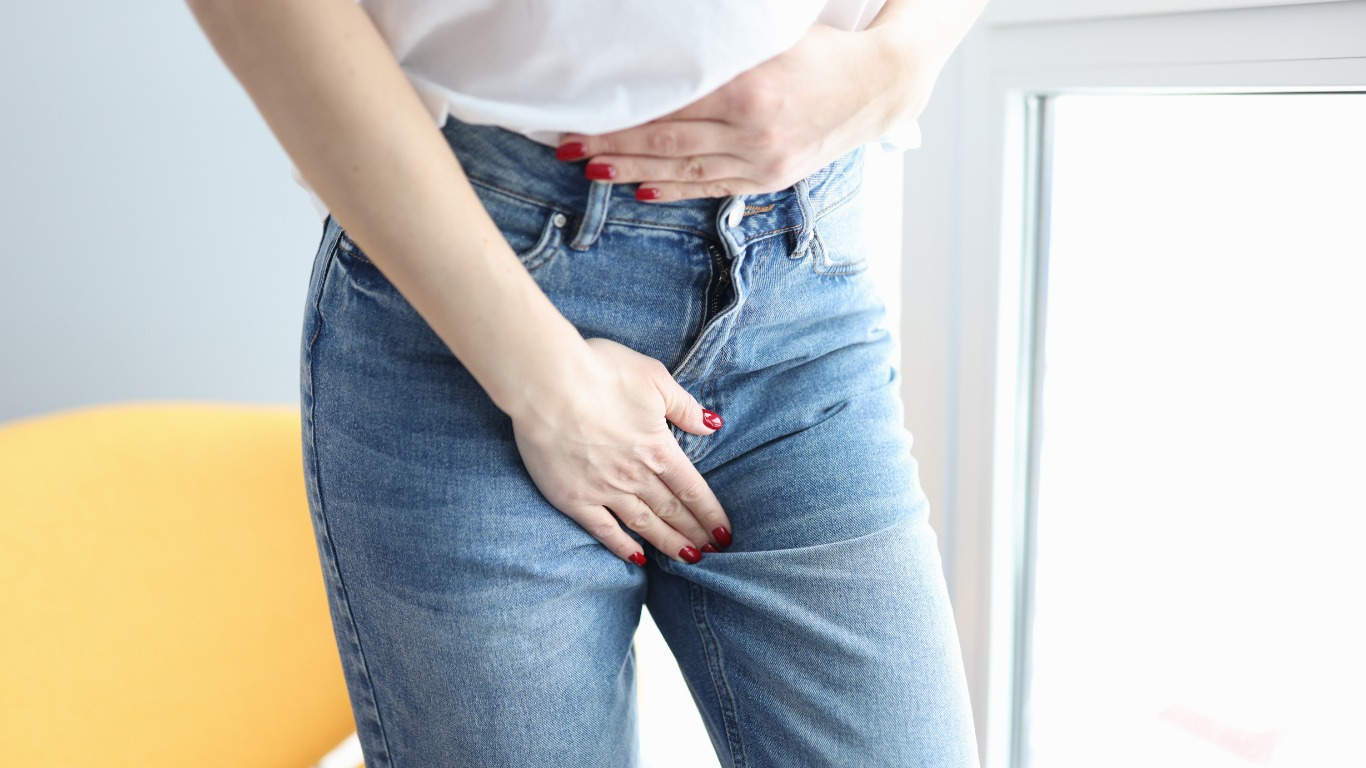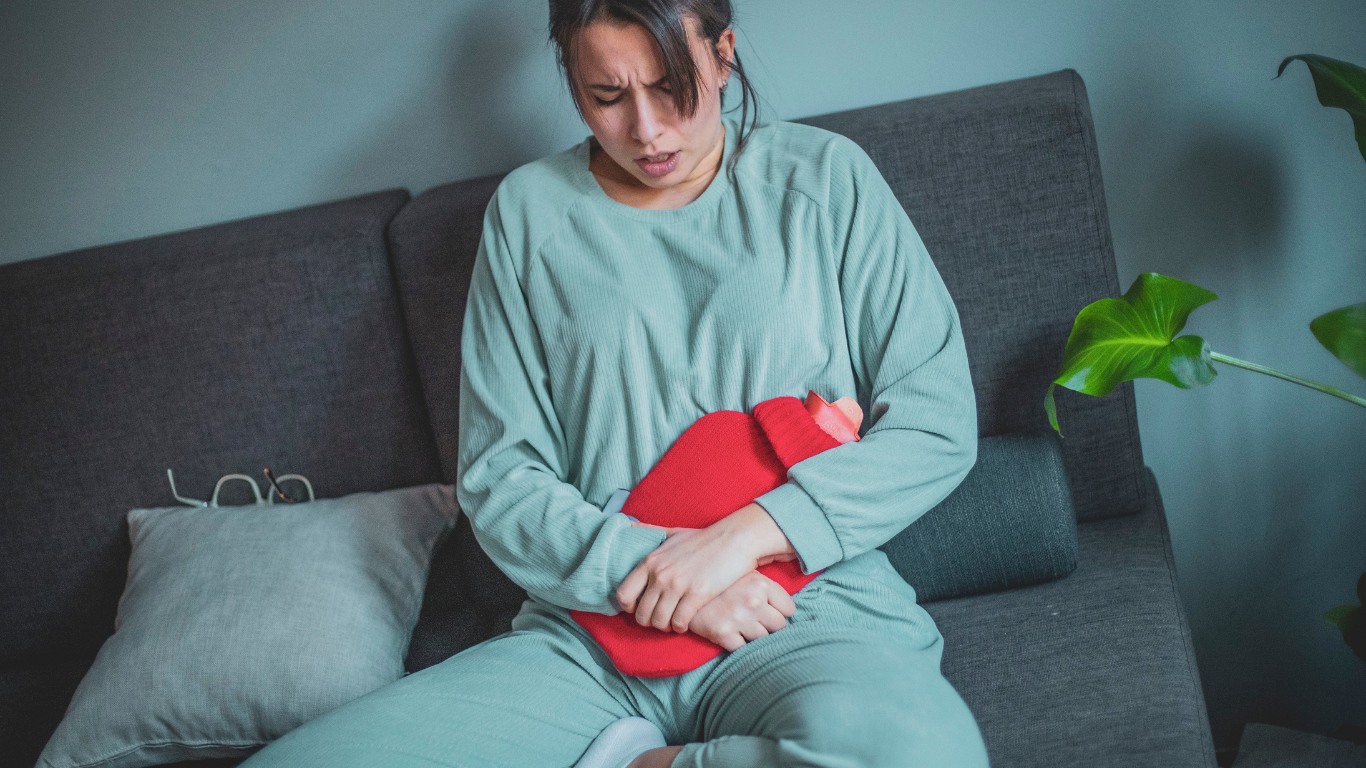Disclosure:
Thank you for reading this post, don't forget to subscribe!
Some of the links on this website are affiliate links. This means that if you click on the link and make a purchase, we may receive a small commission at no extra cost to you. Your support helps us keep the site running.Learn more on my Privacy Policy and Affiliate Disclosure page. Thank you for your support!

If you’ve ever experienced menstrual pain, you know it’s not just a minor inconvenience. For many, it’s a significant disruption that can severely impact day-to-day life. Menstrual pain, or dysmenorrhea, is incredibly common, but the intensity and experience can vary widely from person to person.
The symptoms often include a throbbing or cramping pain in the lower abdomen, which can also radiate to the lower back and thighs. For some, this pain is accompanied by nausea, headaches, dizziness, and even digestive issues. It’s no wonder menstrual pain can be so debilitating.
What’s behind these unpleasant symptoms? Well, it typically boils down to the contractions of the uterus as it sheds its lining. However, factors like hormone fluctuations, underlying health conditions, and even stress can exacerbate the discomfort. Understanding these causes is the first step in managing menstrual pain effectively.
Remember, while some discomfort during your period is normal, severe or unusual pain warrants a chat with your healthcare provider. They can help rule out conditions like endometriosis or fibroids, which can cause more severe pain and other health issues.
Read next: How Exercise Can Help Relieve Menstrual Cramps
An article exploring how certain exercises can alleviate menstrual discomfort.
Now, what can you do about it? That’s going to include looking at your daily habits. Lifestyle adjustments can be incredibly powerful in mitigating menstrual pain. You’re going to find out about the importance of diet, exercise, and proper rest in the next section. Stick with me, I’ve got some practical tips that can make a big difference.

Lifestyle Adjustments for Menstrual Pain Relief
Now what I find intriguing is how simple lifestyle adjustments can dramatically ease menstrual discomfort. These tweaks can make a significant difference, and I’m eager to share them with you.
Regular physical exercise, for starters, is proven to be effective. Engaging in activities like yoga, light cardio, or stretching can increase blood circulation and reduce pain. Remember to choose something that resonates with you; comfort is key.
The impact of what we eat on our bodies is immense, and the same goes for menstrual health. A balanced diet rich in omega-3 fatty acids, magnesium, and vitamins can help temper menstrual pain. Load up on leafy greens, nuts, and fish, but don’t worry too much about indulging in a bit of dark chocolate – it can actually be beneficial!
learn more about: Mayo Clinic: Menstrual Cramps – Diagnosis and Treatment
A trusted resource on the causes of menstrual pain and the most effective treatments.
Good quality sleep is another pillar of managing menstrual pain. It’s important to ensure you’re catching enough Zs to allow your body to recover and regulate pain. A consistent sleep schedule is your friend here.
Lastly, don’t underestimate the power of stress management. High stress levels can exacerbate menstrual cramps. Find your zen with mindfulness techniques, deep breathing exercises, or whatever helps you to decompress and maintain your calm.

Home Remedies and Self-Care Strategies
I’m going to share with you a handful of tried-and-tested remedies that you can easily use in the comfort of your own space. Don’t worry too much about getting everything perfect; it’s about finding what works for you.
First up, let’s talk about heat therapy. It’s not new, but it’s gold. Applying a heating pad or a hot water blowing to your lower abdomen can soothe those achy, cramping muscles. You’re going to find out that sometimes simple warmth is all it takes to reduce discomfort.
Next, massage techniques can work wonders when you’re experiencing menstrual cramps. Light circular motions with your fingertips around your lower belly can promote blood flow and provide relief. If you want to, add a drop of essential oil like lavender to enhance the relaxing effects.
find out more about: Cleveland Clinic: Managing Menstrual Pain
A guide on how to manage menstrual pain with home remedies and medical treatments.
You’ve probably heard about herbal remedies, right? Well, certain herbs can be heroes for menstrual pain. Drinking chamomile or ginger tea can have anti-inflammatory effects that help in curbing the pain. Just remember, if you’re considering herbal supplements, always check in with a healthcare professional first to avoid any unwanted interactions with other medications.
Now, while these self-care measures can be quite effective, they’re part of a bigger picture. When menstrual pain feels more like a monthly misery rather than just an inconvenience, you may need to explore further options. That’s going to include understanding when and how medical interventions can step in to provide relief.

Recent post:
Medical Interventions for Managing Severe Menstrual Pain
I’m here to help you with understanding when and how medical interventions can be a godsend for those dealing with severe menstrual pain. Don’t worry too much about the idea of medical intervention; it’s available to help you when lifestyle changes and home remedies just aren’t cutting it.
Over-the-counter pain relievers, like ibuprofen and naproxen, are often first-line treatments. They’re effective and can be taken as soon as you feel pain coming on. However, it’s important to follow the recommended dosages and to consider any personal health conditions you might have that could be affected by these medications.
Hormonal treatments, such as birth control pills, patches, or vaginal rings, can be a game-changer for menstrual pain management. They work by regulating hormone levels, which can reduce the severity of menstrual cramps. If you’re considering hormonal therapies, I recommend talking to your doctor about the different options and what might work best for your body and lifestyle.
Sometimes, menstrual pain is a symptom of underlying conditions like endometriosis or fibroids. In these cases, your doctor might recommend more targeted medical treatments, such as prescription medications or even surgery. Remember, these are last-resort options for when other treatments haven’t been effective, but they can offer significant relief for those in chronic pain.
If you feel like your menstrual pain is holding you back from everyday activities, don’t be afraid to reach out to a healthcare provider. It’s not just about finding relief today; it’s about preserving your quality of life for all your tomorrows.
Nurturing a Supportive Environment for Menstrual Health

Now, this isn’t just about individual remedies; it’s also about the community and environment around us. A supportive and understanding circle can make all the difference in handling menstrual discomfort.
It’s way past time we broke the silence surrounding menstrual health. Open and judgment-free conversations can empower people to seek help and share experiences without shame.
At home, small acts of kindness, like a comforting word or space to rest, matter. Employers can contribute by offering flexible work hours or a quiet room for employees dealing with menstrual pain.
You might wonder how to be an ally. Start by educating yourself and others. Share reliable information and encourage an inclusive atmosphere where everyone feels comfortable discussing their health.
Numerous apps, forums, and local organizations offer platforms to connect and exchange tips with others experiencing similar issues. Don’t hesitate to join these communities for additional advice and moral support.
Remember, managing menstrual pain is a journey, and it’s not something you have to embark on alone. There’s strength in numbers, and together, we can foster an environment that is not only empathetic but proactive in managing menstrual health.
Conclusion
In summary, menstrual pain, while common, can be a significant burden that affects daily life. Understanding the causes and taking proactive steps towards managing the discomfort is essential.
From lifestyle adjustments like regular exercise, a balanced diet, and quality sleep, to home remedies such as heat therapy and herbal teas, there are numerous ways to alleviate menstrual pain. When these methods aren’t enough, don’t hesitate to seek medical intervention.
Over-the-counter medications and hormonal treatments can provide much-needed relief, and consulting with a healthcare provider is crucial for addressing any underlying conditions.
Now, it’s time to take action. If menstrual pain is impacting your life, start by implementing some of the lifestyle and home remedies discussed. If you need further assistance, reach out to a healthcare provider. Remember, you are not alone, and support is available.
Try Lifestyle Adjustments: Incorporate regular exercise, maintain a balanced diet, ensure quality sleep, and manage stress to reduce menstrual pain.
Explore Home Remedies: Use heat therapy, practice massage techniques, and consider herbal teas to find relief.
Seek Medical Help When Needed: Consult with a healthcare provider for severe or persistent pain to explore medical interventions and rule out underlying conditions.
Join Supportive Communities: Engage in open discussions about menstrual health and join support groups or online forums to connect with others who understand what you’re going through.
By taking these steps, you can better manage menstrual pain and improve your overall quality of life. A supportive environment, both at home and in the workplace, can further aid in managing menstrual health effectively.
Breaking the silence around menstrual pain and fostering open conversations can empower individuals to seek help and share their experiences without shame.
I really hope that this article guides you towards finding the relief you deserve and reassures you that support is out there. You’re not alone in this, and with the right resources and environment, menstrual pain can become a less daunting part of life.
more about:
HEALTH / WELLNESS / FITNESS / NUTRITION
share this article











